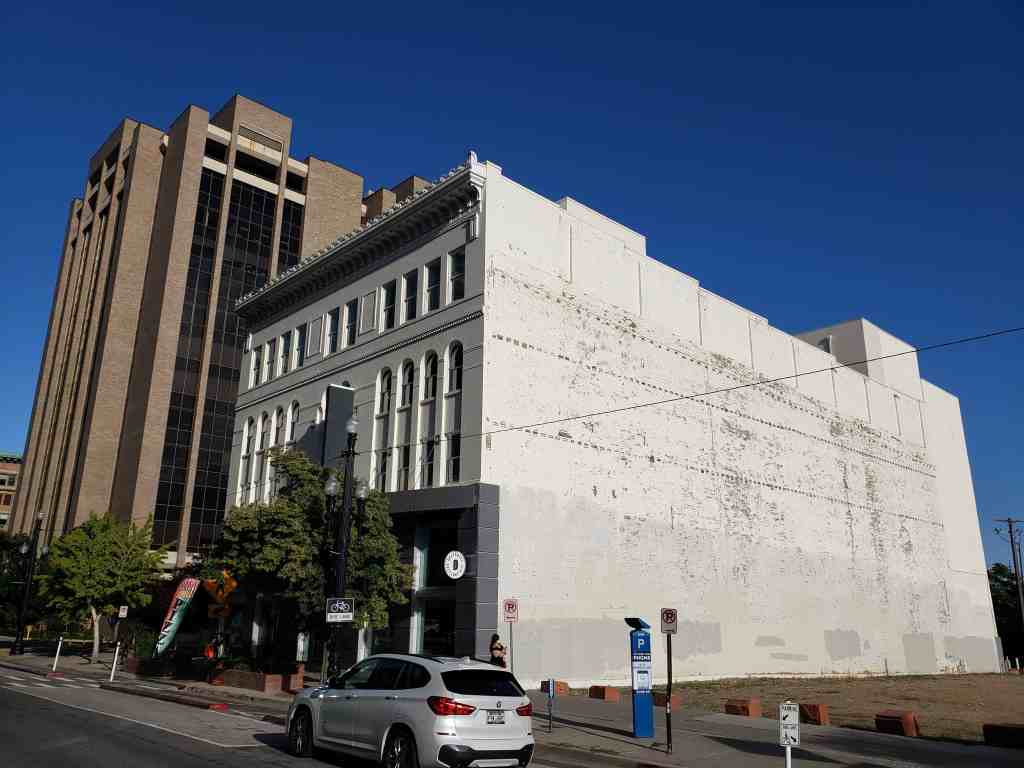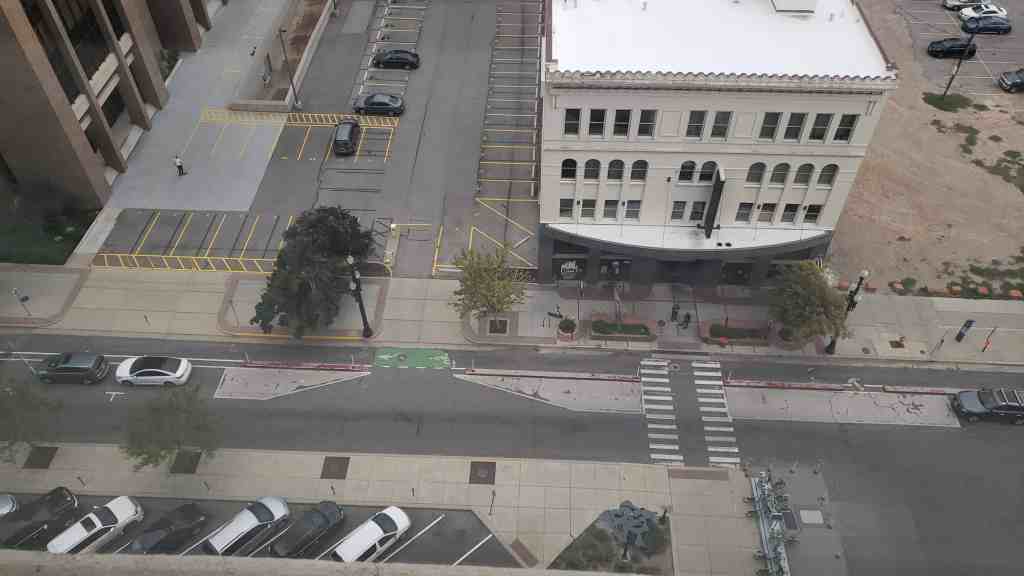
Greenwald Furniture Company Building
The Greenwald Furniture Company Building, constructed in 1913, is architecturally o significant as an excellent example of a typical Salt Lake City turn-of-the-century w commercial architecture. The 1880-1920 period was a time of rapid expansion of the city’s x downtown area. Many large and outstanding commercial structures like the Kearns Building (1909), the Mclntyre Building (1909), and the Newhouse and Boston Buildings (1909-1915) all listed in the National Register were constructed at this time. As Salt Lake City grew, however, not all buildings were of the monumental type. In fact, the majority of commercial structures of the time were plainer, scaled-down versions of the larger designs which housed many of the smaller businesses of the city. Such buildings were characterized by a narrow façade, were two or three stories high, and were usually built deep into the lot. Bands of symmetrically placed windows were featured- above the façade entrance. Decoration was simple and usually confined to the window courses and the upper cornice level. Stylistic elements were historic in origin and often applied in an eclectic fashion in brick, wood, and pressed metal. The Greenwald Building is an excellent example of Salt Lake City’s vernacular commercial architecture. Though it is unusually wide, the façade is broken-up into three distinct sections and this maintains the narrow, vertical appearance of the commercial style popular during the period, The Greenwald Furniture Company Building makes an important contribution to the overall historic and architectural landscape of downtown Salt Lake City by allowing the Multiple Resource Area nomination to encompass the typical as well as the exceptional buildings of the city.
Located at 35 West 300 South in Salt Lake City, Utah and added to the National Historic Register (#82004851) on December 27, 1982. The text on this page is from the nomination form from when it was added to the register.
Mary Harney Judge, wife of mining magnate John Judge, constructed this building in 1903 at an estimated cost of $30,000. In 1913 a fourth floor was added.
John Judge was a prominent Utah mining man. He came to Salt Lake City in 1876 and went to work in the Ontario Mines of Park City. His wife soon followed with their five children. Gradually John Judge acquired leases to a number of valuable mining properties in Park City. He became a leasee of the Mayflower Mine and part owner of the Silver King Mine with David Keith and Thomas Kearns. Following his death in 1892 at the age of 42, his wife invested his money in Salt Lake City real estate. At the time of her death in 1909, her estate had an estimated value of three million dollars.
A capable businesswomen, she also contributed large amounts toward the building of the Cathedral of the Madeleine, as well as the YMCA Building and All Hallows College. She also paid for the construction of a Miner’s Hospital. It later became Judge Memorial High School.
From the time of its construction in 1903 until 1928, the occupant of the building was the Greenwald Furniture Co. It was organized in 1902 by Jacob A. Greenwald, Hiram Leipsiger, and Carl S. Schmidt, all of whom had previously been employed by the Freed Furniture and Carpet Co., an old Salt Lake firm. The company prospered and in 1910 expanded its program to include manufacturing and occupied the old Salt Lake Stamp Co. building to the west. The business withdrew into the original building during the WWI years and dissolved in about 1928. During its healthiest period, the Greenwald Furniture Co. was located in the heart of a furniture making and selling district. On the same block or across the street were Axelrad Furniture, Broadway Furniture, Burrows Furniture, and Skolnik Furniture.
After Greenwalds’ departure, the Broadway Furniture Co., owned by Esper C. Sorensen, occupied the building. In 1933, the company dissolved, Sorensen founded Sorensen’s Co-op Furniture and moved to a Main Street location. For the first time, no furniture company occupied the building.
For the next decade and a half, a variety of small businesses occupied the building. They included the Terminal Sales Building, the Forbes Hat Co., the Jay Hat Co., and the Bercu Wholesale Millinery Co.
In 1947 the Sterling Furniture Company moved into the building and occupied it until 1976. Previously located on State Street, the company was part of the Peter W. Madsen Furniture Co. group, one of the state’s earliest commercial furniture manufacturers.
The craft of furniture making was brought to Utah by such men as Brigham Young, Henry Dinwoodey, Ralph Ramsay, and other Mormon pioneers. The industry was fairly well developed by the 1850’s, although wood was scarce in Utah and furniture making was a minor operation for many years. By the time Peter W. Madsen came to Utah in 1975, however, the railroad had arrived and wood, as well as patterns and tools, could be imported.
Peter W. Madsen was born in Copenhagen, Denmark, in November 1852. He came to Utah in 1875 and established a furniture business shortly thereafter. His furniture house transacted business in several western states and carried such items as “Moquet, Velvet, Brussels and Ingrain carpets,” as well as “every description of furniture in all grades.” Madsen became a major figure in local financial circles, serving as president of the Utah Commercial and Savings Bank, the Western Shoe and Dry Goods Co., the Western Savings and Loan Co., and as a director of the Grant Brothers Livery Co. and the3enefit Building Society.
Carrying one of the largest stocks of any furniture house west of Denver, Madsen’s business eventually grew into various companies bearing different names, but owned and managed by Madsen and his family. The Sterling Furniture Co., established in 1925, was one of those. R. W. Madsen, Peter’s son, was general manager when it moved into this building.
In summary, the Greenwald Furniture Co. Building was built and owned by a leading Utah mining figure and has been historically associated with the growth of the local furniture industry.















The photo below is of 41 W Broadway, J.E. Paine Building and the Western Electric storefront in 1916 but next to it on the left you can see this building.

